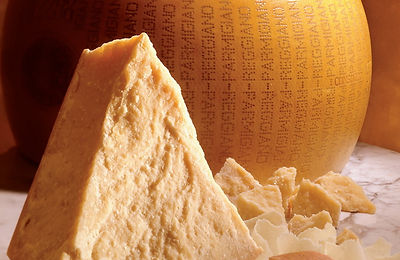



The Perfect Cheese Board
1. Choosing the Cheese
A good cheese board should always be a combination of texture, flavour and shape. As well as aged, soft, firm and blue. Go for cheeses that look different, they will almost certainly taste different too. Have at least five different kinds.
2. Label each cheese.
If a guest is a cheese novice and tries a 'new' cheese and loves it, it's easy for them to know what it is.
An easy way to do this is, tooth picks with printed slips of paper or these days, slate cheese boards are quite popular so you could write on it in chalk.
3. Bread and crackers
Use different types: salty crackers, bread sticks or sliced baguettes. This will offer a variety of textures and shapes to compliment the cheese
4. Go Sweet on them
Jams, sauces and chutneys even honey works great as well as fresh fruit like grapes or slices of pear and dry fruit like prunes or apricots. Nuts like pistachios or walnuts are also perfect for adding that bit of crunch. This is also a great way of adding colour to your board.
The natural sweetness of fruit compliments the saltiness of cheese.
5. Now Set It Up
Typically, the board should be arranged and eaten from mild to strong cheese in clockwise fashion.
Seperate the stronger cheeses from the others so that the odour doesn't transfer
Cheese tastes better at room temperature, so prepare the board at least an hour before serving.
If you want, you can also slice the hard cheeses . It invites the guests to go ahead and tuck in.
6. Pair em Up
Lay out your cheese board to give the guests an idea of how to pair the cheeses, this will help apprehensive guests get comfortable with the idea of pairing the cheese with accompaniments
For example: Honey close to the blue cheese and gorgonzola , onion marmalade with camembert or brie, walnuts close to brie, aged balsamic vinegar is great with Parmiggiano Reggiano, Pecorino and aged cheddar.
However, there are no hard and fast rules, just experiment and have fun and you will find your very own favourite pairings.
And Finally:
One knife per flavour, don't mix
Serve fresh soft cheeses like Brie, whole
Pre-cut semi-soft cheeses.
Cut semi-hard cheeses into wedges to expose them to the air
Don't forget your tongs, cheese knives, cheese forks, utensils and/or wooden picks and serving plates
Most of all just Have Fun!!
Cheese, Oh Please! Know Your Cheese
We all have our favourites and some of us just stick to the basics like Gouda,or when we're feeling adventurous we add some Feta to our salad or Mozarella to our pizza ,so, clearly, we're not cheese snobs. But there's a time and place for everything and even though we enjoy some Philadelphia cheese with crackers and sweet chilli sauce, cocktail parties not withstanding we have all indulged in the odd stinky cheese from a well curated cheese board. And since the festive season is upon us you can be sure you will be faced with your share of 'stinky' cheeses at those glam affairs you get invited to.
This time lets try not to be intimidated by the different sizes, shapes and mould.
But where to begin? How would you know which are mild and which are stinky? And how to choose from the many varieties of 'blue cheese' Heck, it can be pretty daunting and cheese virgins can be intimidated but lets try and de-mystify the mould.
Soft cheese
Brie, Camembert, Feta
A penicillium fungus gives it its furry white rind.
Not usually used in cooking, soft cheeses are used to spread on bread or crackers.
Brie and Camembert have a strong aroma, but less than blue cheese.
Semi-soft cheese
Gouda
The rind is rinsed and brushed with a solution of salted water enriched with specific bacteria, which encourages orange-coloured fungi to appear. Ideal for snacking or cooking if they stand up to heat well enough.
Semi-hard cheese
Cheddar, Edam, Emmental, , Gruyère,
Once transformed into curds, the cheese is heated, pressed, moulded and left to ferment. This is how the famous holes appear in cheese that is stored in cellars (such as Emmental). Very rich in calcium. Maturing can take from three to nine months, or longer. Great for cooking or baking
Hard cheese Pecorino Parmiggiano Reggiano
A hard cheese has less water content than a soft cheese . Packed into moulds, firmly pressed and stored for long periods (up to two years), they become hard and more pungent over time. Grate over pasta dishes or very mature Pecorino Tuscano is delicious with fruit.
Both these cheese names can only be used if produced in a specified region in Italy. So if you're using grated parmesan over your pasta and it doesn't say Parmiggiano Reggiano, it is definitely not the same thing.
Blue cheese (stinky)
Roquefort, Gorgonzola, Stilton
Skewers containing penicillium cultures are injected into the cheese which allows mould to develop . This is what produces the green or blue veins. You will always find at least one of these on a cheese platter.
These cheeses can only be called by those names if they are produced in that particular region in that particular country. Produced elsewhere they will just be called blue cheese.
Fresh cheese
Cottage cheese
This is fresh cheese with 80% water content. Milk is curdled and drained, but little other processing. No ageing. Cottage cheese is typically eaten with fruit or in salads.
Mozzarella
The curd is kneaded and stretched until it reaches the desired consistency. Mozzarella is often used in pizza and lasagne.
Ricotta
Technically not a cheese, but rather a cheese by product. It is made from the whey drained from other cheeses such as Provolone or Mozzarella. Great in savoury dishes or desserts.
ALL RIGHTS RESERVED Deelish Life 'n Style 2013
CONTACT US: info@dfnmag.co.za





